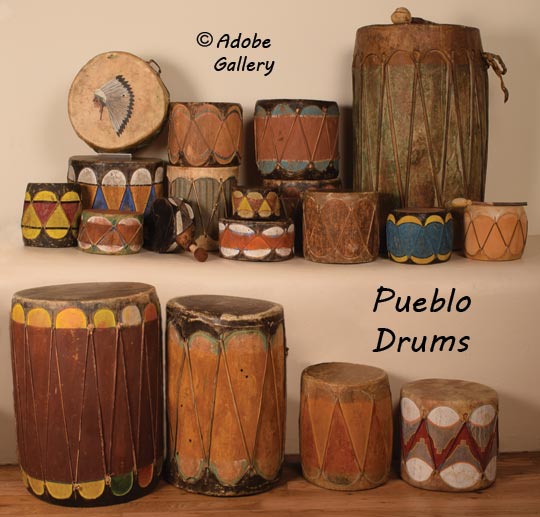Historic Cochiti Pueblo Painted Drums
July 12, 2023 until September 01, 2023
Drums, both painted and unpainted of all sizes are used in Pueblo ceremonies. Drums suggest the thunder preceding a rain storm. Each pueblo drum has two heads. Ceremonial songs are arranged to increase in intensity slowly and then build up to a climax. At a point in the song, the drummers know to flip the drum to achieve a higher tone. This increase in intensity and tone inspires the dancers and gives them the kick to continue dancing.
In 1902, the Candelario store in Santa Fe purchased 100 drums but its ledger does not indicate size or origin. Another entry the same year indicates that Candelario paid 75 cents for a drum. In 1903, another merchant, S. Dozier of Espanola, New Mexico, offered a Denver client two large dance drums as part of a shipment, but the price was not indicated.
Pueblo drums are generally made by hollowing out a log and stretching animal skin over each end. The heads of pueblo drums are sometimes painted, most often black. There are usually several drummers participating in pueblo dances and each holds a drum and beats it with a drumstick.
This 19-drum collection includes Cochiti Pueblo painted drums amassed by Dana Lipsig Scarpitta of New York City over a period of several years. Most of them are at least 50 years old and some might be older.
References:
- Batkin, Jonathan. The Native American Curio Trade in New Mexico. Wheelwright Museum of the American Indian, Santa Fe. 2008
- Marshall, Ann. Rain: Native Expressions From the American Southwest. Heard Museum. Museum of New Mexico Press. 2000
- Feder, Norman. "Indian Musical and Noise-Making Instruments" Denver Art Museum Leaflet No. 29, August 1931


